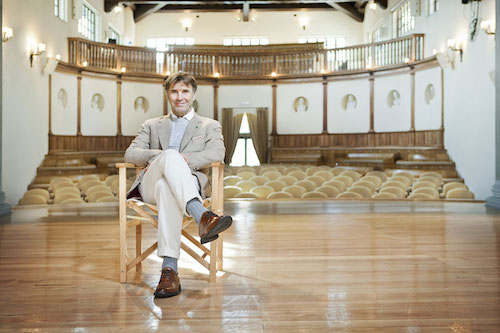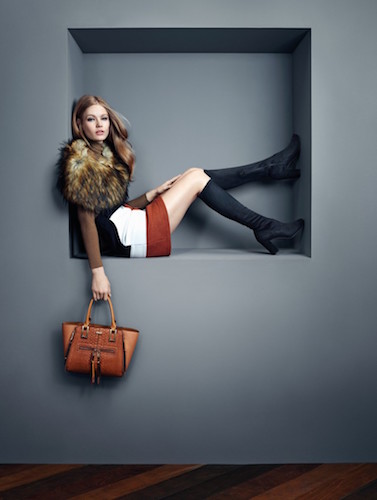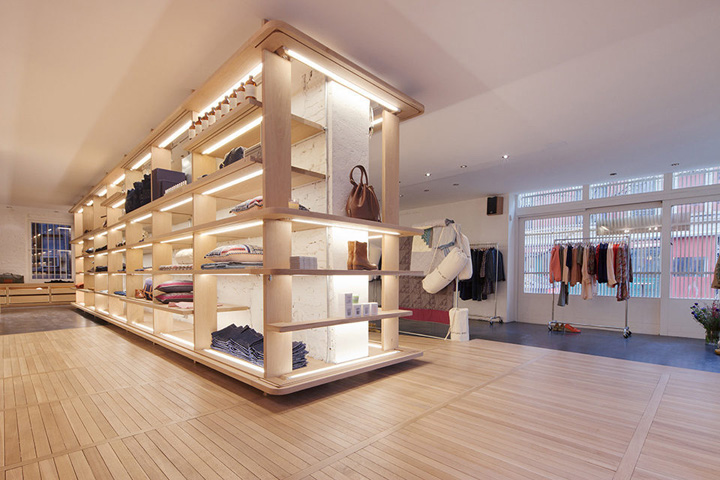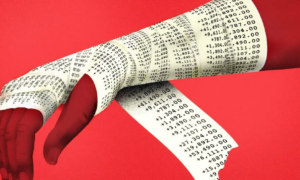(Editor’s note: Terry Boyd also contributed to this post. See the first installment here, which highlight’s Europe’s high street and mall stores such as River Woods.)
If there’s one thing newly arrived expats from, say, the United States, notice is how dynamic retail is in Europe, especially the luxury segment. That said, you’re probably more familiar with fast-fashion innovators such has Swedish fashion giant H&M. Spanish-born Zara and Mango. You’ve likely not just heard of these mega-fashion retailers but shopped them … with all having a global presence. (Mango leads the way with 1,700 stores in 100 countries. H&M has 422 stores and Zara 68 stores.)
These are the retailers we pretty much live with, present in every big European city including Vienna, Amsterdam and Berlin. But Europe also has successful emerging fashion houses and retailers along with elite established brands. Many, such as A.P.C. and Cecilie Copenhagen, are virtually unknown in the States, but hugely influential here.
Allow us to open your eyes with this ongoing, comprehensive guide to all of the groovy fashion boutiques scattered throughout Europe, along with some brands, designers and retailers making the jump to the European market:
• Bottega Veneta:
Think of Bottega Veneta as the original Brunello Cucinelli … a brand that started out in an 18th century Italian villa. Or maybe the Italian Hermès, built on a reputation for artisan leather goods. Starting in the early ’60s, Bottega Veneta built its brand on a distinctive leather weave called intrecciato, a design still used for its purses and other products. What it didn’t have was a flamboyant Louis Vuitton or Hermès-style logo. In the pre-Kardashian days, wealthy people with actual taste embraced the BV slogan, “When your own initials are enough.”
As these things usually go, Bottega Veneta got snapped up in the 1980s by the luxury conglomerate with the most flagrant logo of them all … Gucci. And guess what – the BV logo was born. Somewhere along the line, Tom Ford brought in Tomas Maier, who dumped the logos and returned Bottega Veneta to its artisan origins. This is one of those discreet charms of the bourgeois fashion houses that makes great clothes with price tags reflective of quality and low production, and not mass marketing. (Prices are comparable to other ultra high-end brands. In the current men’s ready-to-wear collection, a man’s leather coat goes for 4,000 euros, and a woman’s wool crepe coat is about 3,800 euros. Small clutches start at about 500 euros, with purses priced between 1,000 euros and 3,000 euros.)
Maier doubled down on the return to handcrafting garments and accessories and in the style of Brunello, built a new production facility in Vicenza that includes a school to train its craftsmen and craftswomen. All that said, BV is pretty much a mass brand, with more than 350 stores worldwide to supply, stores that sell everything from apparel to home furnishings. But somehow, the brand straddles the crass commercial world of H&M and the rarified world of Chambre Syndicale de la Haute Couture.
• Brunello Cucinelli:
 Designer Brunello Cucinelli established his fashion house within the walls of a 14th-century castle in the medieval village of Solomeo, Italy in 1985, on the philosophy of “making work more human, with people at its core.”
Designer Brunello Cucinelli established his fashion house within the walls of a 14th-century castle in the medieval village of Solomeo, Italy in 1985, on the philosophy of “making work more human, with people at its core.”
Per Cucinelli:
In my organization the focal point is the common good, which is the guiding force in pursuing prudent and courageous actions. In my business, people are at the very center of every production process, because I am convinced that human dignity is restored solely through rediscovery of the conscience.
 As for the clothes, Cucinelli’s bread and butter is dyed cashmere sweaters for men and women; the overall collections are what could be described as a contemporary take on heritage fashion. Online ordering is available, augmented by hundreds of boutiques around the world. There are Brunello Cucinelli boutiques pretty much anywhere wealthy people gather, including 20 in Italy, at least one in nearly every European capital including Sofia, and five stores in Switzerland, including Zurich, Geneva and even the ski resorts of Gstaad and St. Moritz.
As for the clothes, Cucinelli’s bread and butter is dyed cashmere sweaters for men and women; the overall collections are what could be described as a contemporary take on heritage fashion. Online ordering is available, augmented by hundreds of boutiques around the world. There are Brunello Cucinelli boutiques pretty much anywhere wealthy people gather, including 20 in Italy, at least one in nearly every European capital including Sofia, and five stores in Switzerland, including Zurich, Geneva and even the ski resorts of Gstaad and St. Moritz.
Brunello himself is famous as a modest (if extraordinarily well-dressed) guy and humanitarian who’s built an international clientele on $1,000 sweaters and $4,000 off-the-peg suits. His clothes are legacy pieces meant to be worn for decades.
• Cecilie Copenhagen:
(Editor’s note: We included Cecilie Copenhagen in the first post. We’re including them here because we get to make up the rules, and their look is really fresh.) Cecilie Copenhagen, as the name suggests, is originally from Denmark, with their flagship store located at Valkendorfsgade 13 in Copenhagen. Founded by then-21-year-old creative director Cecilie Jørgensen in the winter of 2011, the namesake brand creates clothing for women “in unique designs and uncompromising quality” in a universe “made up by soft rays of light and striking prints, by vibrant colours and unique patterns.” CC recently got a lot of attention from fashion/lifestyle bloggers such as Pandora Sykes with a summer dress with a keffiyeh-inspire print.
From Wallpaper:
Cecilie Copenhagen is quite literally the definition of an overnight success. The story of the Danish design student fashioning a tunic from her mother’s keffiyeh scarves will surely go down as one of the most quoted in recent fashion history.
Just recently, Refinery29 and Wallpaper have done posts and profiles. A clean break with all the European apparel retailers who simply copy Tommy Hilfiger and Ralph Lauren.
• Custo Barcelona:
 Founded by designers Custo and David Dalmau in 1996, Barcelona’s Custo Barcelona explodes with colorful prints and intricate finishes, influenced by the brothers’ background in design and architecture. Forget about visions of New England; here, the clothes reflect the warmth of Mediterranean beaches, and the vibrant nightlife of Ibiza. Though the majority of Custo Barcelona’s pieces lay in womenswear, there are plenty of T-shirts and polos for men to consider, as well. And while Europe’s Custo Barcelona boutiques call Spain and the countries surrounding the aforementioned Mediterranean Sea home, you can always order online (they even accept PayPal, in case typing out your credit card number is too much of a hassle).
Founded by designers Custo and David Dalmau in 1996, Barcelona’s Custo Barcelona explodes with colorful prints and intricate finishes, influenced by the brothers’ background in design and architecture. Forget about visions of New England; here, the clothes reflect the warmth of Mediterranean beaches, and the vibrant nightlife of Ibiza. Though the majority of Custo Barcelona’s pieces lay in womenswear, there are plenty of T-shirts and polos for men to consider, as well. And while Europe’s Custo Barcelona boutiques call Spain and the countries surrounding the aforementioned Mediterranean Sea home, you can always order online (they even accept PayPal, in case typing out your credit card number is too much of a hassle).
This is another ready-to-wear apparel maker targeting young consumers with affordable prices. Women’s tops and men’s tees start at about 60 euros. Prices top out at about 200 euros.
• River Island:
 Born in a bombed-out location in London’s East End in 1948, the retailer which would become River Island began life as Lewis Separates, so named for its founder, Bernard Lewis, and his three brothers. By 1965, with mod culture in full swing, the then-70-store chain rebranded itself as Chelsea Girl, followed by the menswear-focused Concept Man in 1982.
Born in a bombed-out location in London’s East End in 1948, the retailer which would become River Island began life as Lewis Separates, so named for its founder, Bernard Lewis, and his three brothers. By 1965, with mod culture in full swing, the then-70-store chain rebranded itself as Chelsea Girl, followed by the menswear-focused Concept Man in 1982.
Both brands would merge into River Island in 1988, whose current offerings skew towards Coachella aesthetic on the womenswear side, business hipster for menswear. Clothes are definitely – compared to high-end labels on this list – affordable-to-mid-range, with prices starting about 20 pounds for men’s shirts, and 30 pounds for dresses. Company executives speak often of wanting to be the “high street brand.” Translated to American English, that means they want to compete with mass-fashion giants H&M and Mango on Europe’s shopping streets with fashionable, yet affordable, looks.
As of July 2015, River Island boasts 317 stores around the world, 247 of which are in the United Kingdom; online ordering is available to 100 countries worldwide.
While unknown in the U.S., the brand gets more than its fair share of pub in the United Kingdom, with the trades documenting pretty much Rivers Island’s every move including new hires and new stores.
There’s a recent post on The Industry with details about River Island’s new digital office in Shoreditch, London’s tech hub. In the post, CEO Ben Lewis is quoted as saying the apparel chain wants to become a force in the tech sector, and that developing tech projects in-house is “a significant step and will make the rest of the high street sit up and take notice.” Is Lewis hinting about design? E-commerce? We think it’s the former, because the company ships all over the world.
• PrettyLittleThing:
British retailer PrettyLittleThing is a womenswear-focused fast fashion retailer along the lines of H&M, Zara and Forever 21. The vast collection of dresses, shirts, skirts et al is updated on a regular basis, pulling from the latest runway and celebrity trends. As a bonus, a good selection of basics, dresses and tops can be had for as little as £4 to £15. Don’t expect to head into a PLT store, however, as the retailer is strictly online; they also accept PayPal for your convenience.
• A.P.C.:
 Meet the French Zara (sort of), A.P.C. The minimalist, ready-to-wear brand – whose full name is Atelier de Production et de Création – was founded by Tunisian-Jewish designer Jean Touitou in 1987 as a counter to his contemporaries’ loose-fitting pieces. A.P.C. is known for its clean, military-influenced designs, and for its slim-cut, Japanese raw-denim selvage jeans. It’s also known for cutting-edge store design and Touitou’s provocative pronouncements:
Meet the French Zara (sort of), A.P.C. The minimalist, ready-to-wear brand – whose full name is Atelier de Production et de Création – was founded by Tunisian-Jewish designer Jean Touitou in 1987 as a counter to his contemporaries’ loose-fitting pieces. A.P.C. is known for its clean, military-influenced designs, and for its slim-cut, Japanese raw-denim selvage jeans. It’s also known for cutting-edge store design and Touitou’s provocative pronouncements:
“I don’t want to do anything revolutionary here. I want to make beautiful clothes. You cannot sustain a label on making subversive clothing, because eventually, if it works, your clothing will become mainstream, and then what? It’s not the right way… Really, the most subversive thing you can do right now is wear beautiful clothes.”
That same Vogue post earlier this year said it best: “The style set follows Jean Touitou the way Twitter trawls Kanye West.”
Unlike most apparel companies outside of Ralph Lauren, A.P.C. sells an entire lifestyle built on a spare aesthetic and a no-label label. (The company even sells quilts.) The best piece we’ve read is an interview with Touitou in the Dec. 2015/Jan. 2016 issue of Monocle. If you have a subscription, you can see it here. The post has photos of the Touitou family’s Paris apartment and its decidedly mid-Century Modern look.
A.P.C. has 60 boutiques, and more than 300 outlets carry A.P.C. around the world, with online ordering available as well. Prices range from 70 euros for T-shirts to more than 400 euros for topcoats and shoes. But their purses might be the best deals at 400 euros and below, far less than Louis Vuitton and Hermès.
Zadig et Voltaire:
 Zadig et Voltaire – named after both the author Voltaire and his 1747 novel, Zadig ou la Destinée – was founded in Paris by the nephew of Lacoste founder André Gillier, Thierry Gillier, in 1997. The hoi polloi need not apply. The brand’s audience consists of mostly the hip, rich and beautiful – well-moneyed elites and their children –while the style pulls from the history of rock and roll. Hundreds of boutiques and retailers cover locales from Zadig’s home market and most of Europe, to faraway spots in the United States, Japan and United Arab Emirates; you can use your laptop, as well. Cashmere sweaters start at about 300 euros, and purses start at about 300 euros.
Zadig et Voltaire – named after both the author Voltaire and his 1747 novel, Zadig ou la Destinée – was founded in Paris by the nephew of Lacoste founder André Gillier, Thierry Gillier, in 1997. The hoi polloi need not apply. The brand’s audience consists of mostly the hip, rich and beautiful – well-moneyed elites and their children –while the style pulls from the history of rock and roll. Hundreds of boutiques and retailers cover locales from Zadig’s home market and most of Europe, to faraway spots in the United States, Japan and United Arab Emirates; you can use your laptop, as well. Cashmere sweaters start at about 300 euros, and purses start at about 300 euros.
• Galeries Lafayette:
This is a shopping experience, not a brand. But it still defines French fashion. For more than 120 years, the French upmarket department store chain Galeries Lafayette have offered nothing but the best premium brands to its customer base. Fifty-seven stores in its home market – including the flagship on Boulevard Haussmann in Paris – and four international stores in Berlin, Dubai, Jakarta and Beijing comprise Galeries Lafayette’s portfolio, each bringing “the French art of living” wherever it goes. Online shopping is available, but only to customers in France and the European Union.
• s.Oliver:
 Originally a small boutique in Würzburg founded by current CEO Bernd Freier in 1969, s.Oliver – named for the protagonist of Dickens’ novel Oliver Twist; the “s.” is for “Sir,” in homage to British menswear retailers who had the appellation in their name – features a wide range of women’s-, men’s- and children’s wear, with something for everyone. S.Oliver can be found in more than 30 countries today, from its native Germany to as far away as India, where the company has an ongoing relationship with local textile manufacturers. Online shopping is limited to a handful of European countries.
Originally a small boutique in Würzburg founded by current CEO Bernd Freier in 1969, s.Oliver – named for the protagonist of Dickens’ novel Oliver Twist; the “s.” is for “Sir,” in homage to British menswear retailers who had the appellation in their name – features a wide range of women’s-, men’s- and children’s wear, with something for everyone. S.Oliver can be found in more than 30 countries today, from its native Germany to as far away as India, where the company has an ongoing relationship with local textile manufacturers. Online shopping is limited to a handful of European countries.
• oki-ni:
Established in 2001, oki-ni once existed in the physical realm on London’s famed Savile Row, the home of the style of bespoke menswear tailoring bearing the street’s name. Upon acquisition by French fashion retail group Menlook in the 2010s, oki-ni sells menswear by the likes of Lanvin, Dries van Noten, Raf Simons, Marc Jacobs, Rick Owens, and Valentino solely online. No matter where you are in Europe, oki-ni will outfit you in style, unless you live in Russia; outside factors have prevented the retailer from shipping orders there.
Oh, and it’s worth going to the oki-ni website just to hear the music they post from avant-garde groups such as Ibibio Sound Machine.
• Prada:
In the U.S. and Asia, Prada is viewed as a top-end fashion trendsetter. In Europe, Prada is ubiquitous. There are four stores in Paris alone. But the brand is also available at Europe’s outlet malls. Which means what? Over-saturation? Probably. At least that’s what the media are reporting as Prada profits fell by 15 percent for the first part of 2016 compared to the same period last year. The Milan-based apparel and luxury-goods company is having a tough time building a young audience at its price-points, which typically start at $1,000 for a dress, $1,800 for purses and $2,000 for a man’s suit. Prada is just now moving to e-commerce, and only sells purses and accessories online.
Prada is also one of the last of the great luxury fashion houses to remain independent, escaping the clutches of LVMH and Richemont. Since the 1990s, Prada has become its own mini-conglomerate, snapping up Jil Sander and other designers along with accessories makers. All that said, Prada still has some of the world’s most exciting ready-to-wear clothes at prices below major competitors such as Hermes and Bottega Veneta. Like Brunello Cucinelli, there are Prada stores in every major European city.
• Missguided:
 British online retailer Missguided pulls its style influences from several areas, including the catwalk, the street, fashion bloggers, and social media. Like H&M, Zara and some of the entries here, Missguided is a fast-fashion extraordinaire which believes shopping “is a right, not a luxury,” offering thousands of womenswear pieces which could be best described by us as a mashup of H&M and American Apparel. Missguided recently began testing more physical retail waters, linking up with Nordstrom and Selfridges in 2015. The chain just announced its first foray into bricks-and-mortar with a 20,000-square-foot store in London.
British online retailer Missguided pulls its style influences from several areas, including the catwalk, the street, fashion bloggers, and social media. Like H&M, Zara and some of the entries here, Missguided is a fast-fashion extraordinaire which believes shopping “is a right, not a luxury,” offering thousands of womenswear pieces which could be best described by us as a mashup of H&M and American Apparel. Missguided recently began testing more physical retail waters, linking up with Nordstrom and Selfridges in 2015. The chain just announced its first foray into bricks-and-mortar with a 20,000-square-foot store in London.
• J. Lindeberg:
Coming straight out of Stockholm – the city which has the heart of our own Terry Boyd – is J. Lindeberg. Forget heritage fashion from New England, for this is heritage fashion “for an active Scandinavian lifestyle.” Founded by namesake Johan Lindeberg in 1996, the brand sought to “challenge the establishment of the fashion and golf industries through an anti-conformist and rebellious business idea,” becoming a pioneer in the contemporary luxury market in so doing. J. Lindeberg was also the first Swedish brand to march down the runways of Italy during Milan Fashion Week in 2003, and currently boasts 90 stores in 35 countries around the world.
Shirts start about about 80 pounds, and J. Lindeberg leather jackets are about 450 pounds.
Lifestyle journalist. Born in Louisville. Raised in Kansas. Where I lay my head is home.














